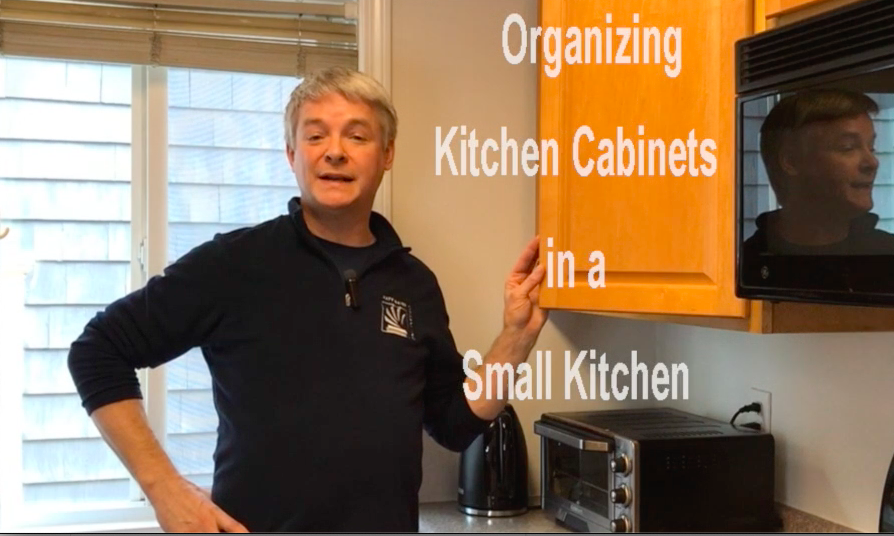Organizing kitchen cabinets in a small kitchen requires more prioritizing than in larger kitchen. It’s easy to shift between work stations in a small kitchen, but hard to find cabinet space. I’ve got 3 organizing guidelines to open up more cabinet space. Actually these apply not only in your small kitchen but larger kitchens too. They’re all in my book, The Circulation Solution, available for a free download at mattbaier.com.
#1. Showroom vs. Stockroom
This is the big one. It applies to the kitchen, but also to every space in the house, in a big way! Always clarify whether your space is a showroom or a stockroom.
Do you need for it to be open, inviting and well lit? Can things be displayed at eye level or lower? Do you require just a limited amount of “inventory” but a lot of activity?If yes, then you are looking at a showroom space, like any kitchen.
If you are using more vertical open storage and worrying less about appearances, then that’s stockroom space. Here you can store more stuff, but there is less activity. Here’s the crucial thing about stockroom spaces. You must be able to trust that you can find what you want, when you want it within seconds.
That way, your showroom space can support your showroom spaces, like your kitchen.
You can trust that if you store the excess there you can restore your showroom inventory instantly. Ask yourself this. Can you store less of an item in your showroom cabinet if you can replace it in seconds? If yes, store the bulk of it in your stockroom space. By the way, a stockroom can be as near as a pantry or a closet. It can even just a top shelf.
# 2. Frequency Merits Facility
This means, the more often you use something the easier it should be to access. For example, I make coffee twice a day, so that better be super easy. i’ve got a kettle, dripper, cup, coffee, and filter all within arms reach of each other. Easy!
Here’s another example. I need late afternoon snacks daily, so they are at eye level in clear labelled boxes. This space over the fridge often gets wasted and snacks can take up a lot of space. So in a small kitchen, this location makes sense. By contrast, I rarely steep tea in a pot, so I keep tea-time on the tip tip shelf. That opens up space below.
#3. Find Over Fit
One of the hallmarks of good organizing is finding what you want when you want it. To prioritize finding often requires that you don’t just settle for fitting. For example, here I am with a bag of groceries. If I just settle for fitting, I might see this open shelf and decide I can fill it up. It fits so I must be organized. Nope.
As I mentioned, I need a dedicated coffee shelf. Anytime I want coffee, I know that I can reliably find it here. I would never think to find a can of chicken noodle soup on my coffee shelf.
The open spots tell a useful story. I need another back-up tin and some decaf for guests. With the shelf full, however, I’m getting the message that I’m not in need. You can further push the find-ability by always positioning the label forward and always keeping just one of each product on the front row. Same goes for cups and glasses.
I hope these tips have made it easier for Organizing kitchen cabinets in a small kitchen For more easy organizing tips please subscribe to my You Tube Channel.













Leave A Comment